The Land Of China -- Explore by Province
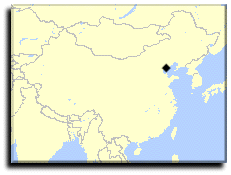 |
 |
Tianjin
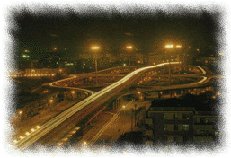
|
Tianjin is a special municipality directly under the central government. Lying in the northeast of the North China Plain, it is bordered by the Bohai Sea and separated by the Haihe River flowing through the urban area of the city. Tianjin, neighboring Beijing, has always been known as the gateway to the Capital of China. This unique geographical position made Tianjin the largest port city, the transportation hub, and trade center in North China. As a major foreign trade port, Tianjin, like a bridge and a window, plays an important role in the export-oriented economy of China.
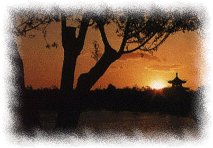
|
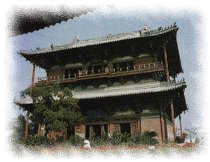
|
The Dule Temple is situated inside the western gate of Jixian, eleven kilometers northwest of the urban Tianjin. First built in the Tang Dynasty (618-907) and rebuilt in 984 AD during the Liao Dynasty ( 916-1125), the temple is now a specially protected historical relic by the government. The Guanyin Tower, one of the main buildings of the temple, is 23 meters high with 24 different kinds of arches, and shows a superb architectural skill. It survived 28 earthquakes including 3 destructive ones, and it is still magnificent and unshakable. Undoubtedly, it is the best-preserved wooden structured and high storied piece of architecture built by the ancient Chinese. In it, there is a 16-meter-high and eleven-faced Bodhisattva, which is a rare clay sculpture made during the Liao Dynasty ( 907-1125 ).
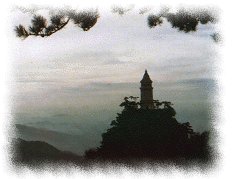
|
Mount Pan, a scenic spot approved by the government, lies 12 kilometers northwest of Jixian County. The mountain consists of five peaks, among which the major one is the 864-meter-high Guiyue (Laurel Moon ) with a tower on its top. Panshan boasts its unique hills, forests, springs, and rocks. There are three bends: Upper Bend, Middle Bend, and Lower Bend. The upper is known for its pines; the middle for its rocks; and the lower for its springs. From the Eastern Han Dynasty (25-220 ) to the end of the Qing Dynasty ( 1635-1911), the mountain as an attraction was visited by many emperors and elite. It is well-known as the "first mountain to the east of Beijing".
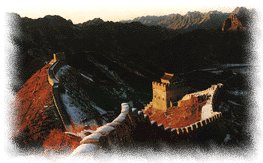
|
"Huangya" means "yellow cliff", and the pass takes its name from the yellowish hills and rocks nearby. Built in 557 A.D. and repaired during the Ming Dynasty (1368-1644), the pass lies in the precipitous mountains, some 30 kilometers north of Jixian County. The section from Mount Banlagang to Mount Wangchangjing was rebuilt in 1984. Grand, unique, and charming, the Huangya Pass possesses several characteristics: both rock and bricks are used for construction; fortresses are shaped either round or square; and the pass is connected with mountains and rivers and is designed in a delicate way.
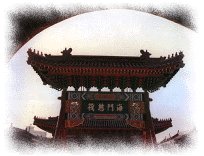
|
The street, formerly a place for the assembly and entertainment of boatmen, was rebuilt into the present state in 1986. It is located on the western side of the Sanchahe River and is 580 meters long, containing ancient-style giant archways towering at each end. Along the street, there are nearly one hundred shops selling various kinds of stationery, second-hand books, articles of folk customs, handicrafts of traditional characteristics of Tianjin, and so on. In addition, there stands one of the three major temples to Matsu in which there is a museum of folk custom.
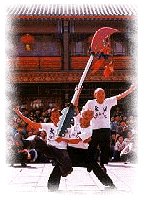
|
Located in the center of Nanshi, an old shopping area, Nanshi Food Street covers 25,000 square kilometers. Like a palace, the street is in a rich folk style and breathes an air of solemnity. Delicacies from all over the country are available here. For example, you can taste dishes with flavors of Sichuan, Shandong, Guangdong, Hunan, and Jiangsu. You can also enjoy many kinds of local snacks. In addition, the street serves food of Russian, Italian, German, and English tastes. Now the street is well-known as the biggest food emporium in China, catering for both popular and special food.

|
Situated in the southwest part of Tianjin City and covering 213 square kilometers, the Shuishang Park is the largest amusement place in Tianjin. As its name suggests, it is characterized by a large expanse of water, which occupies half of the total park area. There are 12 islets, all connected with each other and banks through bridges. They divide the water into three big lakes. The unique charm of the park also comes from the red color pavilions.



 Chinese Culture
Chinese Culture